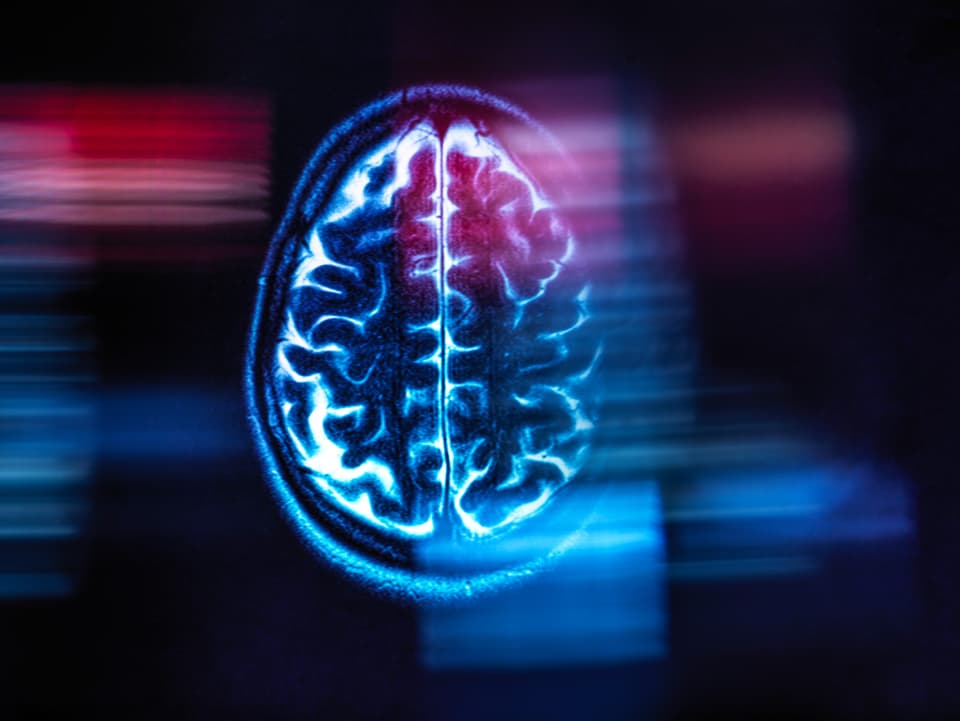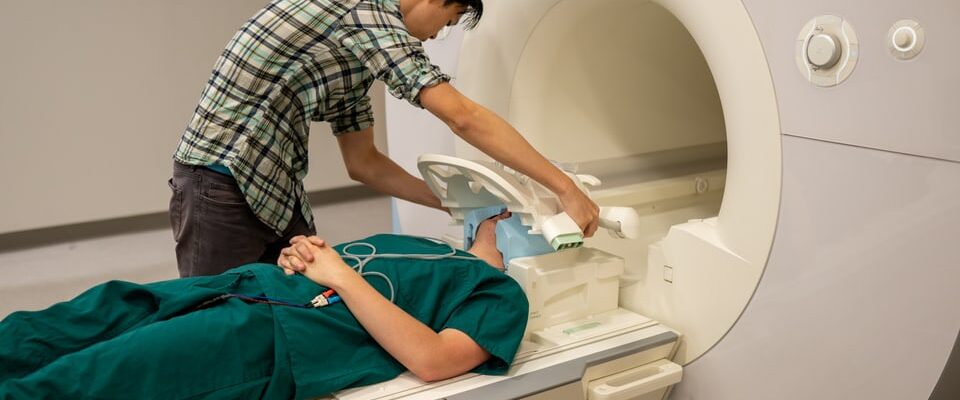Contents
Researchers in the US have decoded thoughts using brain scans and AI. The experiment also raises concerns.
A study from the USA makes you sit up and take notice. Neuroscientists at the University of Texas have succeeded in decoding brain scans and reconstructing linguistic statements from them. The researchers were able to show this using experiments with three test subjects.
The findings of the experiments sound like science fiction: Reading minds thanks to technology. But we are still a long way from that, says brain researcher Lutz Jäncke.
The professor at the University of Zurich took a closer look at the research from the USA. “It’s a complicated method. It requires long measurements and the use of special software,” he says.
Legend:
A University of Texas researcher prepares a subject for the MRI scanner.
Nolan Zunk/University of Texas at Austin
In fact, the test subjects each had to spend a total of around 16 hours in the MRI scanner, listening to podcasts and audio books while their brain activity was recorded.
This data then served as training material for a computer model which, together with the GPT language model, formed the basis for the decoder. The decoder only works for those people whose data it was trained on.
Small progress for research
Because the method is so complicated, one is still a long way from “speaking of mind reading in the classic sense,” says brain researcher Jäncke. “Our brain is a fascinating, extremely complicated organ with 80 to 90 billion nerve cells, each with at least 10,000 connections to other nerve cells.”
Exploring this network requires a great deal of effort. It is not yet possible to achieve this in full.

Legend:
Despite advances in research, the human brain still holds many mysteries for science.
Getty Images/TEK Image/Sciente Photo Library
That’s why the study at the University of Texas is just one piece in a long series of experiments, says Jäncke.
But the research potential is great. One day she could help those people who can no longer speak because of an illness or disability to communicate. “It makes a lot of sense in this area,” he says.
Ethicist warns of risks
Information ethicist Oliver Bendel also believes in the positive potential of the technology. But he also warns of risks if mind reading is technically possible in the future: “Of course the police or secret services will be very interested in it,” says the professor at the Northwestern Switzerland University of Applied Sciences.
Of course, the police or secret services will be very interested.
Bendel sees the danger that the law enforcement authorities would try to convict people as criminals simply because of “bad thoughts”. “If I think of something, I often won’t do it in reality,” he explains.
Link to University of Texas academic article
If someone thinks of a murder, for example, that doesn’t mean anything. “We really should be able to think of everything. Thoughts are free,” demands the ethicist.
Thanks to technology, mind reading is not yet possible. As research from the University of Texas has shown, the test subjects also had to cooperate in order for the experiments to work.
